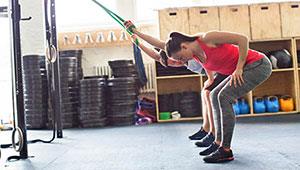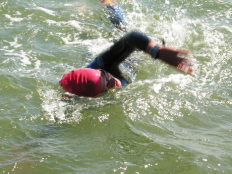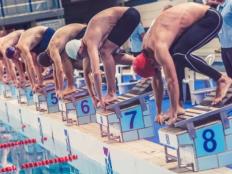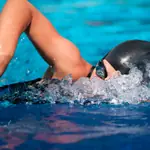
In addition to prepping the body for a workout or race, warm-ups have two key functions:
- To help prevent injury
- To help enhance performance
At rest, blood flow to the skeletal muscles is low and most of the capillaries (blood vessels) are closed. At the onset of activity, the flow of blood to the muscles increases, but it takes about 10 to 12 minutes for optimal flow. Maximum aerobic performance cannot be achieved until the blood vessels are fully dilated.
Further, the elastic parts of muscle are most susceptible to injury when the tissue is cold, and the metabolic processes are slowed—which means less energy is delivered.
A proper warm-up helps to lengthen the muscles, improve range of motion, and increase potential force.
Warming up is also an important way to help prepare the mind for the event, relax the athlete, and improve awareness and concentration.
More: The Real Reason You Should Warm Up
The most effective warm-up is an active warm-up with smooth, relaxed motions—swimming for example. After a good 10-minute warm-up, some athletes will gradually increase their efforts (30 seconds or so).
Of course there is not always time, and circumstances or conditions don't always allow in-water warm-ups. There are, however, very effective mobility, joint and stretching exercises that can effectively help prepare your muscles for swimming.
More: The Perfect Race-Day Warm-Up
But?not all warm-ups are effective.
The Problem With Stretching, Hypermobility and Yoga
One of the concerns I have with Yoga for triathletes is that the movements are NOT athlete specific. The muscles and local stabilizers of the joints can often be stretched beyond normal ranges of function creating instability.
Overstretching is a stretch beyond the normal length of a muscle or the range of a joint and the soft tissues. This results in an athletic kind of joint hypermobility or (excessive mobility). Some sports may require this excess and if yoga is your main activity it might be indicated, but overstretching can be detrimental for triathletes. A loss of joint function and the stability for maintaining neutral positions can result. Pain, injury, and ineffective technique and muscular force are some potential outcomes. A triathlete does not want to be as limber as a very old rubber band.
It's very important to be selective about which muscles and joints need stretching. Each athlete has unique functional balances and imbalances, strengths, weakness and yes, injuries where some muscles are under and/or over active (flexible, tight, weak etc.). Generalized stretching and/or non-specific yoga-type of movements are not always in the best interest of the triathlete. The best approach is to have a therapist or movement practitioner evaluate your movement beforehand.
More: Balance Your Blades: 3 Corrective Shoulder Exerciese
Stretching and Mobility Warm-Up Exercises
Remember that stretching should be athlete specific and aim to target the muscle tissue. Generally speaking, however, the best stretches for swimmers are the Upper Trapezius, Levator Scapulae, Pectoralis Major and Minor, and the Latissimus Dorsi (see video). Those stretches target specific swimming muscles that are important for maintaining normal ranges of motion.
The video below from Evans Coaching discusses and demonstrates a few good pre-swim mobility and stretching exercises. Note, these stretches are especially effective for those with limited ranges of motion.
More: 4 More Pre-Swim Warm-Up Movements
 Search for your next triathlon.
Search for your next triathlon.
About the Author

www.evanscoaching.com | marc@evansoaching.com | YouTube | Facebook
Get ACTIVE on the Go


Meet Mobile
Swim smarter: heats, lane assignments and real-time results in the palm of your hand.
Available for iOS | Android







Discuss This Article